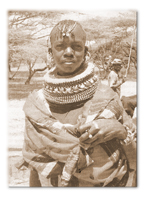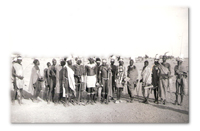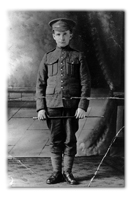 |
| David Ben Gurion |
On the 23rd August, 1917, the formation of a "Jewish Regiment" was officially announced. This would become better known as the Jewish Legion and was technically the 38th – 42nd Battalions of the Royal Fusiliers. Most of these troops were sent for training and preparation for fighting in the Middle East to Crownhill Fort. Interestingly, the Jewish Legion was announced before the famous Balfour Letter of November 1917 which stated that "His Majesty's Government view with favour the establishment in Palestine of a National Home for the Jewish people". Both the creation of the Legion and the Balfour letter need to be understood in terms of the strategic situation in the fighting in the Middle East at the time. British forces had been stalled at the gates to Palestine at Gaza since early 1917. The third and victorious battle of Gaza coincided with this promise to Jews just as Britain's forces were about to enter Palestine proper. It was hoped that they would soon have Jewish troops fighting by their side as soon as they finished their training in Plymouth. The Jewish Legion was quite a cosmopolitan unit with volunteers not only from Britain but also from the USA, Russia, Canada, Argentina and of course throughout the Middle East - including some ex Ottoman Empire troops who had switched sides. Many of the earliest British recruits had been tailors due to this being an important Jewish profession in Britain's cities. Many of the Russian Jews had fled Revolutionary Russia. Jewish soldiers serving in other regiments could apply to switch to the Jewish Legion, but there was no compulsion or expectation to do so and many Jews continued to serve in a wide variety of regular British Regiments. At any one time there would be 800-900 training in and around Crownhill Fort. The volunteers wore the Magen David on their khaki uniforms and had their own blue-white banner with the inscription, "If I forget thee, O Jerusalem".
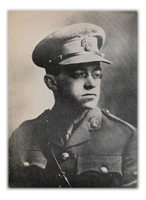 |
| Ze’ev Jabotinsky |
Two of the Legion's most famous soldiers would be David Ben-Gurion who went on to become the first Prime Minister of the independent Jewish State of Israel in 1948 and Ze’ev Jabotinsky who was hugely influential in the inter-war Zionist movement and had been instrumental in lobbying for the creation of this Jewish Legion since the Gallipoli Campaign. Ben-Gurion himself had initially helped raise a Jewish militia in Jerusalem on the side of the Ottoman Turks. However, after the publication of the Balfour Letter he immediately volunteered to join the Jewish Legion in the British Army. He spent much of 1918 in Plymouth where he was very impressed with the green countryside: "It is one of the most marvelous places I have ever seen. When I went out into the fields at dawn for the first time and gazed at the view around our tents, I was intoxicated by the charming scene. Somehow, I didn’t imagine I would ever see a panorama like this in England. Green mountains and valleys covered with silk, fertile fields and the shadows of nearby forest."
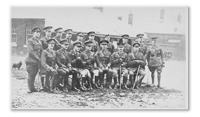 |
| Jewish Legion Staff |
Despite the best efforts of everyone involved in the Jewish Legion's training, there was still a strong element of antisemitism within the British military and indeed within wider society. This made accommodating the basic needs of the Jewish recruits problematic. The commanding officer was Lieutenant-Colonel John Patterson (of the Man-Eaters of Tsavo fame). He had actually been the commander of the fore runner of the Jewish Legion; the Zion Mule Corps which had served in the Gallipoli Campaign and which again had been organised and supplied from Plymouth. He himself was a Protestant and admitted that he knew almost nothing of Jewish culture before his involvement with these Jewish volunteers. However, he believed that ‘the only way to make good Jewish soldiers of the men was by first of all treating them as good Jews’. He threatened to resign three times to higher command if his requests for his troops were not met. Eventually it was through his insistence that the battalions were able to observe the Sabbath on the Saturday, have access to Kosher food and to have religious leaders made available to them or to be allowed to attend religious services in the Synagogue in Plymouth. One of the Jewish Legion commented "It is a fact that Colonel Patterson saw to it - how I do not know - that every Saturday should find us in a Rest Camp; in the morning we would have Synagogue Parade, with all the officers and men, even Christians, standing with their hats on, with the Zionist Flag flying from a tall flagpole, with the Scroll of the Law given to us by the Plymouth Community, and with the concert choir singing all the prayers and the "Hatikvah" and the English National Anthem at the end."
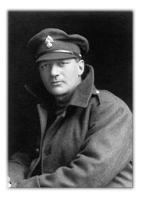 |
| Jacob Epstein |
The battalion itself was proving to be a model unit. Throughout its stay in Plymouth there was not a single case of crime involving any of the Legion's soldiers. Patterson wrote somewhat tongue in cheek "Something new in Army annals". He also set up a wet canteen which served beer, which was also unheard of in the British Army. Patterson commented whilst at Crownhill Fort: "It came as a surprise to me to find that a little tailor snatched from the purlieus of Petticoat Lane, who had never in all his life wielded anything more dangerous than a needle, soon became quite adept in the use of the rifle and bayonet and could transfix a dummy figure of the Kaiser in the most approved scientific style, while negotiating a series of obstacle trenches at the double." and that "Every commander who inspected us always expressed his astonishment at the rock-like steadiness of the Jewish Battalion."
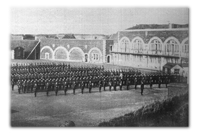 |
| Parade at Crownhill Fort |
Indeed, when General MacReady came down from London to inspect the troops at Crownhill Fort, he was so impressed by what he saw and the bearing of the troops in general that he told Patterson that he would never refuse a reasonable request from the battalion ever again. There was one amusing episode recorded which could either be considered a language problem or perhaps more likely a wicked sense of humour from a Yemenite Jew on guard duty. As one British officer approached the fort, the guard challenged him with the appropriate: "Halt! Who Goes There!" When he received the correct response of "Friend!" the guard amazed the visiting officer by replying: "Advance friend and be circumcised!" History does not record the officer's response! The Jewish Legion enjoyed their time in Plymouth and created a real esprit de corps that they took with them to the Middle East. Patterson took the first tranche of troops to the Middle East in Janurary 1918, although Crownhill remained a training depot for the Legion until the end of the war as new recruits from further afield, like the USA and Argentina made their way to Plymouth to train. David Ben-Gurion for instance was one of these later trainees. After the war ended in November of that year, the Legion's name was changed to the Judean Regiment and it served in the newly created British Mandate of Palestine, although with much reduced manpower. The modern day Israeli Defence Force traces a direct line in its own history back to the Jewish Legion and its surprising origins in Crownhill Fort!
